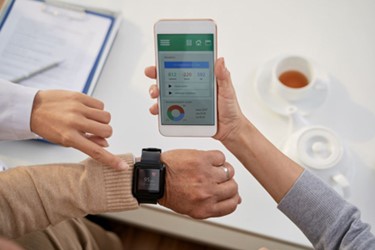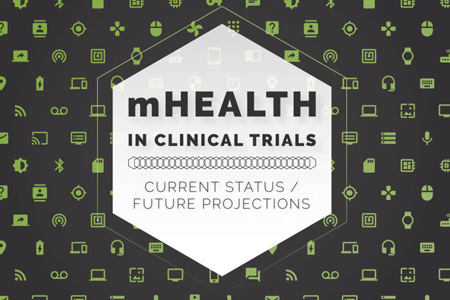The Status Of mHealth In Clinical Trials: Trial And Error

By Ed Miseta, Chief Editor, Clinical Leader

Technology has transformed our daily lives and now stands ready to disrupt and transform the way pharma companies conduct clinical trials. A study by ISR Reports attempts to determine the current status of mHealth in trials as well as make projections for its continued adoption in the future.
For this study, ISR collected both qualitative and quantitative data via telephone interviews and internet-based surveys. Responders were queried on familiarity with mHealth, anticipated implementation, and usage rates in recent or soon-to-be conducted clinical trials.
I spoke to Andrew Schafer, president of ISR, about the report and the trends it highlights. Overall, many larger companies are forging ahead with their mHealth implementations. Still, there are barriers in place keeping others from making necessary investments in the technology.
Ed Miseta: Where do most companies stand in the adoption of mHealth technologies? Based on your research, how are most companies using mHealth in their clinical trials?
 Andrew Schafer: “Trial-and-error” is how I would describe the current use of mHealth in clinical trials. We see pockets of companies that are fully “in” and we see others that are just on the fringes of mHealth use. Only 9 percent of our survey respondents categorized their organization as “highly sophisticated" users of mHealth technologies for clinical trials and 14 percent are at the opposite end of the spectrum, indicating their organization is “just in the early discovery stage.” Companies reported using a wide variety of mHealth applications in their clinical trials, from more traditional eCOA applications to Wearables: sensors (e.g. cardiac patch, galvanic skin response, glucose monitor) to General mHealth data collection app (e.g. Apple Health, MyFitnessPal, Argus).
Andrew Schafer: “Trial-and-error” is how I would describe the current use of mHealth in clinical trials. We see pockets of companies that are fully “in” and we see others that are just on the fringes of mHealth use. Only 9 percent of our survey respondents categorized their organization as “highly sophisticated" users of mHealth technologies for clinical trials and 14 percent are at the opposite end of the spectrum, indicating their organization is “just in the early discovery stage.” Companies reported using a wide variety of mHealth applications in their clinical trials, from more traditional eCOA applications to Wearables: sensors (e.g. cardiac patch, galvanic skin response, glucose monitor) to General mHealth data collection app (e.g. Apple Health, MyFitnessPal, Argus).
Miseta: Do you expect the adoption of mHealth technologies to increase in the next 12 to 24 months?
Schafer: Yes, very much so and we think this is good news for all involved in clinical trials. We’ve seen companies like AbbVie going “all-in” with the use of wearables and digital technologies and we expect others to follow. That said, the larger biopharmaceutical companies seem to be the ones that will likely drive mHealth growth as they have the resources and technology needed to “experiment” and then quickly scale mHealth applications across an organization. A whopping 85 percent of survey respondents indicated their organization will be increasing the amount of money spent on mHealth technologies for clinical programs in the next 12 months.

This market research report is available for purchase below. For this study, Industry Standard Research (ISR) collected both qualitative and quantitative data.
mHealth In Clinical Trials: Current Status/Future Projections
Miseta: What are the primary reasons companies are adopting mHealth initiatives? Have companies seen any measurable results in trial efficiencies or patient engagement?
Schafer: According to our survey respondents, companies are adopting mHealth technologies for clinical trials for several reasons and include, “Improving data quality,” “Increasing/improving clinical trial participant engagement (development angle),” and “Improving clinical trial efficiencies for future trials.” One of the more interesting findings from the market research survey is that half of respondents indicated they expect the use of mHealth technologies to reduce the cost of clinical trial development. As one respondent from Europe noted, ““We utilized continuous glucose monitoring in a study over a seven-week period. It provided us with vital data about “total” glucose control. We used the FreeStyle Libre product. I was very impressed with the utility of the data and it enabled us to skip some Phase 2 studies with the drug.”
Miseta: Are there factors still at work that are holding back mHealth adoption?
Schafer: There are always barriers that will impede new technology adoption. One respondent stated “The regulations themselves hold companies back a little bit. For example, if you’re trying to get the results to a patient, it’s really difficult. How do patients get involved in the design of studies? That might be more important if it’s real world evidence studies in the future. The technology is moving faster than the regulations so back to this question of what’s a device? If it’s a piece of very clever software and some sort of artificial intelligence learning software or image recognition, some of the regulations lag and they’re certainly inconsistent across countries. Then what’s coming out of those just how the validation is done and therefore in order to validate what the end points are that are being measured, it will be quite tricky.”
Miseta: Are there certain therapeutic areas where mHealth is making the biggest impact?
Schafer: When you compare what our survey respondents said about the most prevalent therapeutic areas utilizing mHealth technologies with the industry pipeline of compounds, we find that cardiovascular and rare disease conditions are using mHealth technologies at a greater rate.
